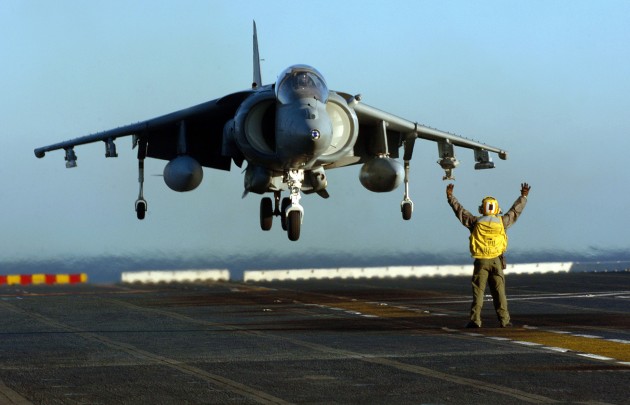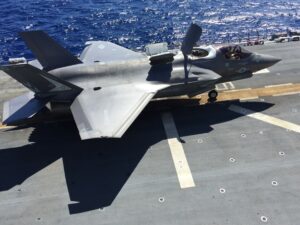Non-Fatal Accidents Double For Marine Corps Aircraft
Posted on

Marine Corps AV-8B Harrier, one of the Marines’ many aging and hard-to-maintain aircraft.
CAPITOL HILL: The rate of non-fatal accidents has doubled in Marine Corps aviation since last year, and the Marines are turning to outside experts to figure out why.
So-called Class C mishap rates — nonfatal incidents that cause $50,000 to $500,000 in damage or loss of work time — have occurred in 2016 at double their previous rate, the deputy commandant for aviation told Congress. Lt. Gen. Jon Davis later told reporters he is so alarmed by the increase that he has hired an outside consultant to study its root causes.

Lt. Gen. Jon Davis
“This study will focus on mainly the ground mishaps,” Davis explained. “It could be a pilot taxiing an airplane (and having an accident), or it could be a towing mishap or a marine falling off of an airplane. Whatever it is, it leads to a degraded readiness position. We need to get our arms around that.”
Davis offered few figures, but the Summer 2016 issue of the Commandant of the Marine Corps “Safety Gram” newsletter reports that Class C mishaps “are seldom discussed in depth, and may not receive the full investigative effort of a more serious mishap. The impact to readiness, however, is still quite significant …. In the last eighteen months, the Marine Corps lost nearly eleven years of aircraft availability to Class C mishaps! The average aircraft requires fifty-five days of work before its next flight. In more extreme cases, the aircraft is unavailable for fifteen months or more. This translates to 7.2 aircraft that are unavailable every day due to Class C mishaps.”
Davis revealed the Class C mishap spike during a House Armed Services Readiness Subcommittee hearing examining how the combination of reduced funding and still-high operating tempos has affected aviation readiness across the services. Like Davis, Army Lt. Gen. Kevin Mangum, Air Force Maj. Gen. Scott West and Rear Adm. Michael Manazir testified that the aviation arms of their services are at relatively low readiness levels, suffering from deficits in spare parts, training, and flight hours air crews need to retain top proficiency. None, however, saw a direct link between their low readiness rates and Class A mishaps — those that cause more than $2 million in damages and/or destroy an aircraft or result in fatalities or permanent disability.
“Our mishap rates are at the same rate that they have been over the past 10 years,” said the Air Force’s West. But he also said, echoing recent remarks by incoming chief of staff Gen. David Goldfein, that combat operations and lower budgets “have contributed to the creation of one of the smallest, oldest and least ready (air) forces in our history.” The Air Force, West noted, had 134 fighter squadrons when the 1991 Gulf War was fought but now has only 55.
Davis offered perhaps the most vivid illustration of budget effects on readiness. As of Wednesday, he told the subcommittee, out of 1,065 aircraft on Marine Corps flight lines, only 443 were ready to fly — a 41.5 percent readiness rate that, ideally, should be 75 percent. “We’re in a deep hole and have a ways to go to climb out,” he said.

F-35B
But Davis also said he sees a bright future ahead as the F-35B and F-35C Joint Strike Fighter replace the Corps’s current fleet of increasingly geriatric F-18 Hornets, AV-8B Harriers and EA-6B Prowlers. Not only should newer aircraft break down a lot less — assuming stealth coatings have indeed gotten more durable since the early days of the B-2 — but they should perform better as well. During a Weapons and Tactics Instructor course exercise at Marine Corps Air Station Yuma, Az., last spring, he said, the F-35 was pitted against both opposing aircraft and ground targets and scored a “24 to zero kill ratio. It killed all targets.” Then he added: “It’s like Jurassic Park, watching the velociraptor. It kills everything.”
Subscribe to our newsletter
Promotions, new products and sales. Directly to your inbox.
